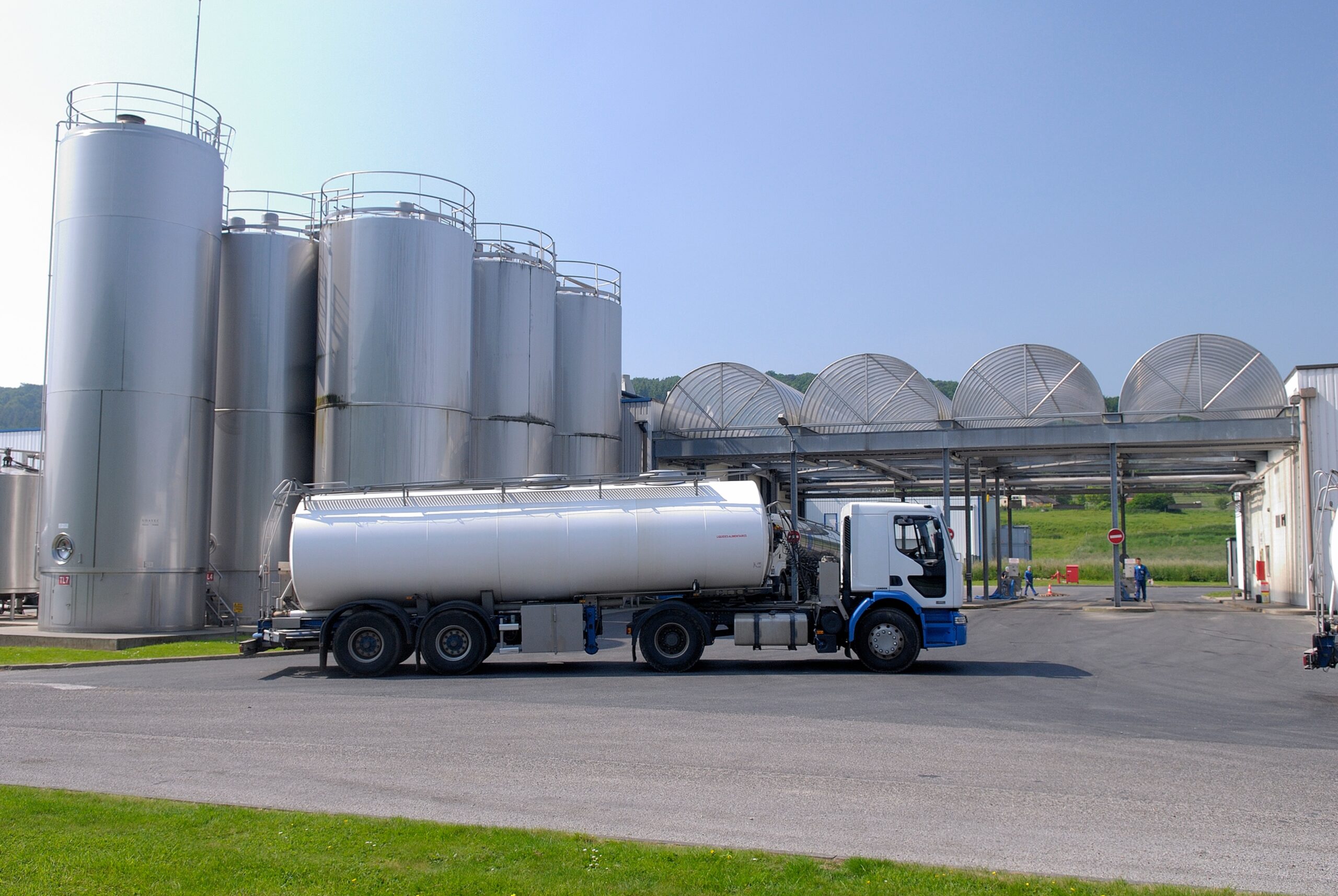In an industrial context, deliveries and customer orders represent an important part of the company’s activity. To meet this demand efficiently, process automation can be an advantageous solution.
Optimizing the efficiency of truck loading is a key element in reducing costs and improving productivity.
To do so, the use of logistics 4.0 software can offer many benefits, enabling real-time supply chain management, as well as optimization of transport routes and loading capacities.
IBITEK Group, editor of industrial software solutions for the heavy industry and materials sector, details here why optimizing the efficiency of truck loading on an industrial site is an important issue for companies, and how logistics 4.0 software can help achieve this.
Safety, productivity and sustainability: the challenges of truck loading in an industrial environment
For a plant, the challenges of loading trucks on an industrial site are multiple.
First of all, it is a matter of optimizing the use of resources, such as time and space, to maximize the plant’s productivity. This includes minimizing truck waiting times and optimizing trailer fill to avoid empty runs and unnecessary transportation costs.
In addition, the safety of workers and goods is a major concern, and truck loading must be carried out in such a way as to minimize the risk of accidents, damage to vehicles or infrastructure, or deterioration of products.
Finally, environmental issues must also be taken into account, with the need to minimize CO2 emissions linked to transport and to optimize the use of natural resources such as water and energy.
To meet these challenges, the use of Logistics 4.0 software can help maximize the efficiency of truck loading, allowing for more accurate planning and better organization of logistics operations, while ensuring the safety of workers and goods and minimizing environmental impact.
The essential functionalities of a logistics 4.0 software to optimize the management of a plant’s supply chain
In the industrial logistics sector, the centralization of information and the digitalization of flows have become essential to ensure efficient and profitable management of truck loading and unloading operations.
For a factory, a logistics 4.0 software must offer functionalities allowing real-time access to loading and unloading stages, as well as fluid communication with third-party systems.
In this context, it is essential to understand the functionalities that are essential for a logistics 4.0 software to ensure accurate planning, better organization of logistics operations, while ensuring a secure and optimized supply chain management for the plant.
Centralized information and real-time access to loading and unloading stages
Centralized information and real-time access to the loading and unloading stages of a truck are key to optimizing logistics efficiency.
With these capabilities, companies can plan more efficiently and optimize operations to reduce costs and improve service quality. Logistics managers can access accurate, real-time information to easily communicate with drivers, dock operators and customers to quickly resolve issues. This can help minimize labor and transportation costs while identifying potential bottlenecks to improve efficiency.
Digitalization of workflows
It reduces errors and saves time by eliminating manual data entry. Manual data entry can often lead to typing errors, omissions or incorrect information, which can result in delays, additional costs and quality issues. It can also increase processing and transit times.
Digitizing workflows improves supply chain visibility and facilitates coordination between the various players in the supply chain.
Communication with third-party systems
Communication with third-party systems is crucial for industrial logistics because it allows for fast and automated transmission of necessary information (inventory data, invoicing, orders…) with partners and suppliers in real time, which facilitates the planning and organization of logistics operations.
By integrating logistics software, it is possible to automate these data exchanges and considerably reduce the time and effort required for manual data entry, while improving data accuracy and order processing speed. The use of such a software allows to gain in efficiency and productivity, while reducing costs and risks of errors.
What industrial logistics operations can be optimized with Logistics 4.0 software?
Logistics 4.0 software can efficiently manage weighing operations, on-site access, ERP transactions, automation of truck loading and unloading phases, on-site vehicle traceability and the generation of tracking and analysis reports.
Thanks to the use of different technologies such as RFID/QR and the centralization of collected data, it allows a complete traceability of each weighing operation and an optimized management of the truck loading and unloading processes, thus reducing waiting times and risks of errors.
Here are more details on the possibilities of the software.
Weighing management:
A logistics 4.0 software, allows to manage the weighing operations of the trucks, either at the entrance or at the exit of the site. The data collected is stored centrally and ensures complete traceability of each weighing operation. The flow management solution allows to control the weight of the loaded or unloaded parcels, compared to the expected theoretical weight. It generates alerts in order to avoid any kind of truck loading error, pollution or other criteria that may be detected by the weighing.
It also allows to optimize the truck loading, in case the number of products that can be loaded on the truck is higher than the number of products ordered. It also allows to minimize the delivery costs in case more products could be delivered.
On-site access management:
The solution allows to control the accesses on the industrial site using different means such as badges or access codes which allows to guarantee an optimal security on the site, allowing to control the accesses in real time.
Transaction management in connection with the ERP:
A logistics software package is designed to work in conjunction with the company’s existing ERP systems, allowing for easier management of logistics-related transactions and operations. The application allows for centralized management of data, which can be exchanged in real time with the ERP system for better synchronization of information.
Automation of truck loading and unloading phases:
The application allows to automate the different steps of the loading and unloading process of the trucks on the industrial site. Indeed, thanks to the loading or unloading information, a logistics 4.0 software is able to specify the zone(s) on which the truck has the right to circulate and to inform the operators if it is on the wrong zone.
This significantly reduces waiting times and the risk of errors associated with manual data entry.
For example, if product A is to be loaded and the truck goes to a zone to load product B, the truck will be refused, thus avoiding a number of errors.
This is done automatically based on criteria previously defined at the time of configuration and parameterization, in accordance with the needs of the site.
Traceability of vehicles on site by RFID/QR:
Logistics 4.0 software uses RFID/QR technology to ensure optimal traceability of vehicles on the industrial site. This functionality allows real-time location of vehicles, as well as precise identification of trucks and transported goods.
Generation of monitoring and analysis reports:
The solution allows the generation of real-time tracking and analysis reports, providing a complete overview of logistics operations. These reports allow for more informed decisions and facilitate the optimization of truck loading and unloading processes on the industrial site.










